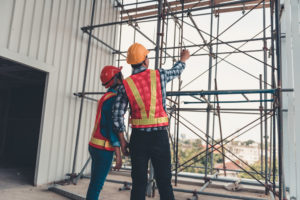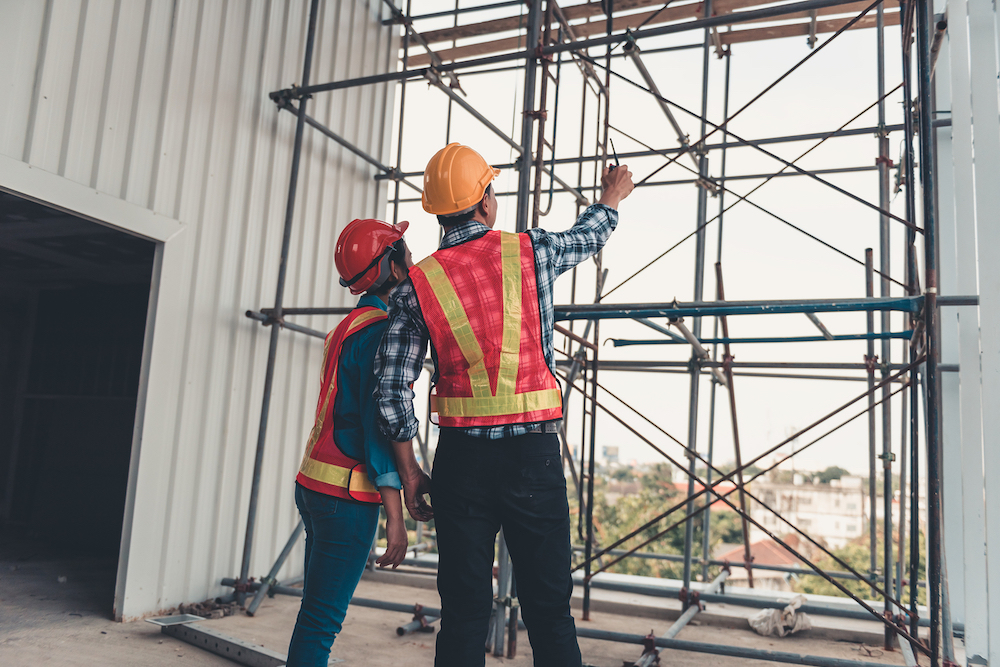
Substantial completion marks the moment in a construction project when the owner can occupy or use the property for its intended purpose — even though some punch list items may remain. In many cases, substantial completion is used to calculate the deadlines for final payment, mechanics lien claims, and other rights and responsibilities for those who worked on the job.
Contractors need a firm understanding of substantial completion in order to ensure they get paid for their work. In this article, we’ll outline how you can review the contractual requirements for substantial completion, and we’ll explain the other aspects of project closeout that are closely related to substantial completion.
Substantial completion is defined by the contract
One of the difficulties surrounding substantial completion is that the definition can vary from project to project. In essence, substantial completion occurs when there’s only minor, corrective, or warranty work remaining.
The American Institute of Architects (AIA) offers this definition of substantial completion: “The stage in the progress of the work when the work or designated portion is sufficiently complete in accordance with the contract documents so that the owner can occupy or use the work for its intended purpose.”
Ultimately, contractors want to avoid situations where the moment of substantial completion is unclear, because final payment is often tied to substantial completion.
Therefore, it’s best to review the contract carefully to ensure that substantial completion is clearly spelled out. In most cases, the best ways to define substantial completion are by tying it to a clear project milestone, like Certificate of Occupancy. Other common options include a Certificate of Substantial Completion or a Notice of Completion in the states that use such notices.
Certificate of Occupancy
One option is to tie substantial completion to the issuance of a Certificate of Occupancy since the AIA definition includes “_occupy or use the work for its intended purpose.”_ Having a straightforward and precise description of substantial completion will provide clarity to all parties regarding what is expected to be finished.
Certificate of Substantial Completion
Construction projects that use contract documents from the American Institute of Architects (AIA) will often use the AIA Certificate of Substantial Completion. The architect on the project will inspect the site and issue the certificate when the building is ready to use.
Notice of Completion
In some cases, if a Notice of Completion (NOC) is filed, the date of substantial completion is irrelevant.
In California, for example, the deadline to file a mechanics lien is 90 days from “completion” of the work. However, if a Notice of Completion is filed on a California project, the deadline to file a lien claim is reduced to just 60 days from the NOC filing.
Only seven states require the property owner to file a Notice of Completion (also called a “Notice of Cessation” or “Affidavit of Completion”): Alaska, Arizona, California, Massachusetts, Nevada, Tennessee, and Utah. Some other states have voluntary Notices of Completion.
Substantial completion vs. final completion
Substantial completion is an important part of project closeout, but it does not mean that a project is completely finished. Typically, final completion is the actual end of a construction project, when a Certificate of Occupancy has been issued and all remaining punch list items have been completed.
For contractors, it’s important to know how substantial completion, final completion, and even last furnishing date relate to your payment rights.
Why substantial completion matters
Contractors and suppliers need to know the date of substantial completion in order to calculate future deadlines. It may affect:
- The deadline for payments to the GC and subcontractors (final payment and retainage)
- A contractor’s deadline to file a mechanics lien or bond claim
- The expiration date for liability & warranties
Once the project reaches substantial completion, it will trigger some crucial timelines. Let’s take a look at some key factors.
Payment deadlines
Reaching substantial completion entitles contractors to the remaining balance of the contract price, minus any retainage withheld.
If a contractor is faced with non-payment after reaching substantial completion, the contractor can choose to cease work. Non-payment could even be considered a material breach of contract by the owner. If the contractor fails to reach this point in their performance, they will likely be barred from attempts to obtain the full contract price.
Substantial completion is great news for subcontractors, too, since it means final payment is right around the corner. Generally, when substantial completion has taken place, only minor corrective work and punch list items will remain.
Other deadlines
Substantial completion will often trigger deadlines that could have serious implications.
Statute of Limitations & Statute of Repose
Once a project has reached substantial completion, the clock starts ticking for statute of limitations and the statute of repose for claims.
A statute of limitations generally sets a time limit from the time an issue is discovered – once that time limit expires, claims cannot be made. So, where a defect is discovered, a statute of limitations will set a time limit for making a claim based on that defect.
A statute of repose will set an overarching time limit, and after that time has passed, liability will be extinguished. A statute of repose might state that a contractor will only be liable for defects discovered within 10 years of their performance of work. Essentially, it puts a time limit on liability so that contractors and subs aren’t indefinitely liable.
Specific definitions and timelines vary by state and municipality.
Warranty period
After substantial completion, the clock also starts running for warranty periods.
Warranty periods are the time during which a contractor has a duty to correct defects through supplemental performance. These are more commonly known as the one-year correction period, as in the one provided by the AIA A201 General Conditions.
A warranty period does not affect your deadline or bar your potential claim but defines how long contractors are liable to repair any of their defective work.
Prompt payment and retainage deadlines
Prompt payment timeframes and retainage deadlines are different from state to state, and deadlines within the same state may even be different depending on whether a project is public or private.
Sometimes, these deadlines and timeframes will be based, in part, on substantial completion. Considering retainage and slow payments are the two most common sources of construction payment disputes, understanding how substantial completion is calculated is invaluable.
Lien and Bond Claims
Substantial completion also triggers the clock for mechanics lien claims and payment bond claims in many states.
For example, in Louisiana, a lien claimant has 60 days from substantial completion of the project to file a lien claim. Similarly, states like Missouri and Indiana have a deadline of anywhere from 60 days to 1 year to enforce their bond claim from the date of substantial completion.
Reduced liability
Once a contractor reaches the point of substantial completion they will be released from certain liabilities. One, in particular, is the assessment of construction delay claims and liquidated damages. These typically cannot be enforced past substantial completion.
Additionally, reaching substantial completion also alleviates the contractor from liability for material breaches of the contract. If the contractor performed sufficiently enough to reach this point, they could avoid a claim of material breach of contract. However, there still are some non-material aspects left uncompleted on the project, such as punch work.
Approach substantial completion carefully
Keeping all of the above information in mind, generally, substantial completion will occur when there’s only minor, corrective, or warranty work remaining for the entire project. If the primary obligations of the prime contractor or project manager have been completed and everyone is winding down their work at the site, there’s a good chance that substantial completion has occurred.
Because substantial completion can be so hard to pin down, it’s important to communicate openly with the GC and property owner on the project. Keeping detailed, comprehensive records of your work and your communication with the project’s owners will be critical if there is a dispute about the date of substantial completion in the future.
Ultimately, be conservative about calculating your payment deadlines and the timeline to protect your lien rights. If you’re waiting to get paid for your work, waiting for the deadline to approach could mean losing your rights.


